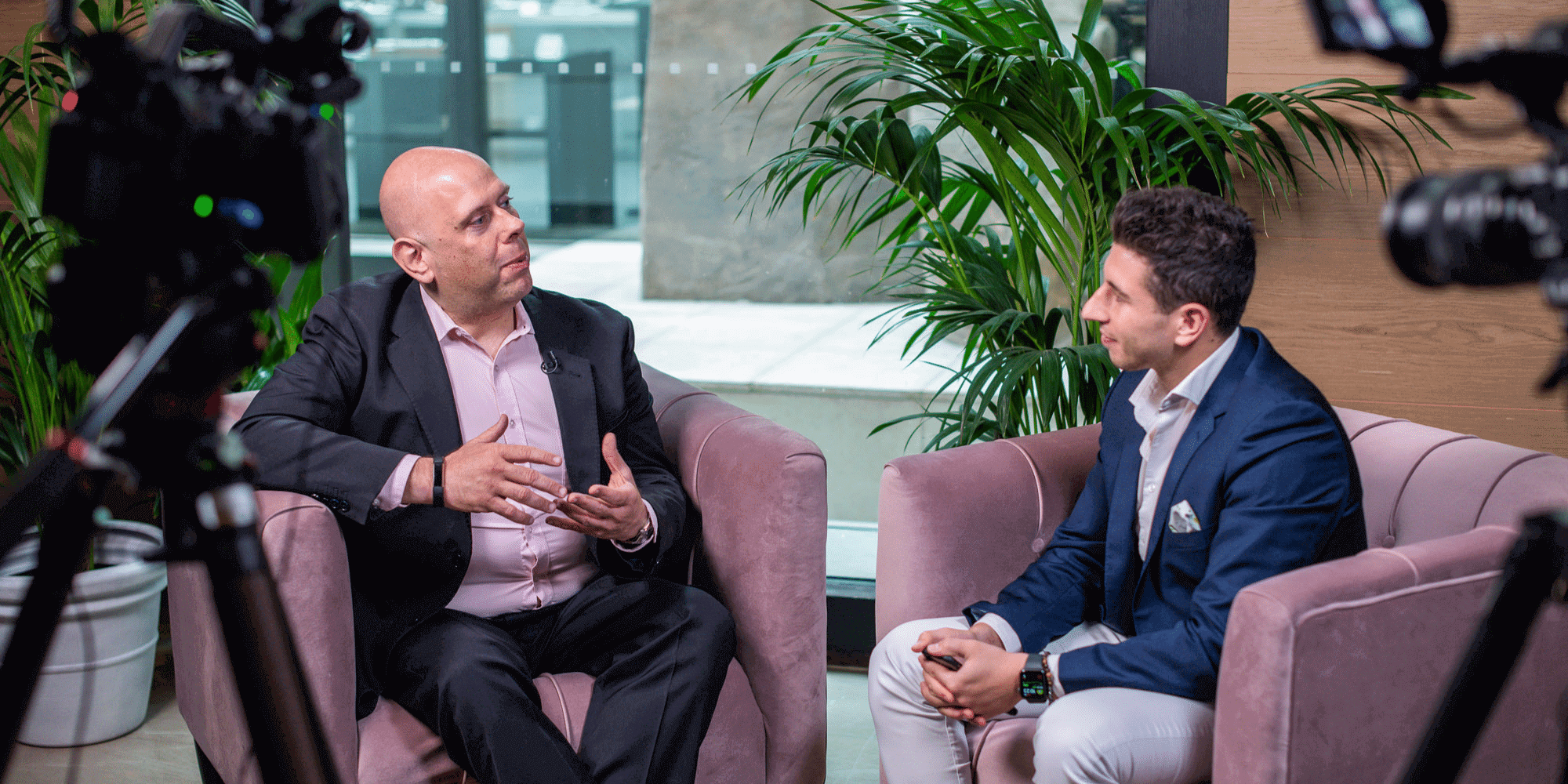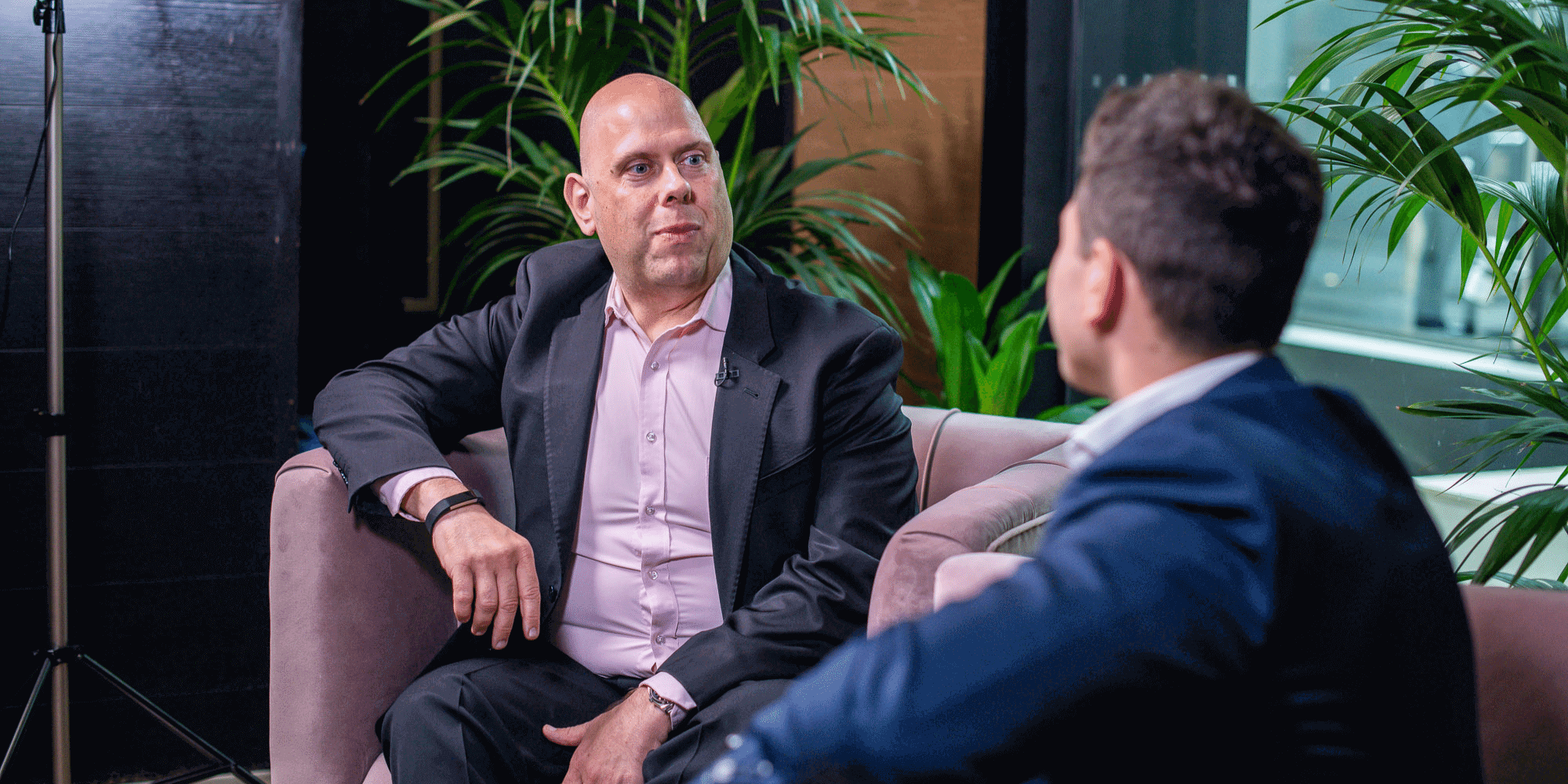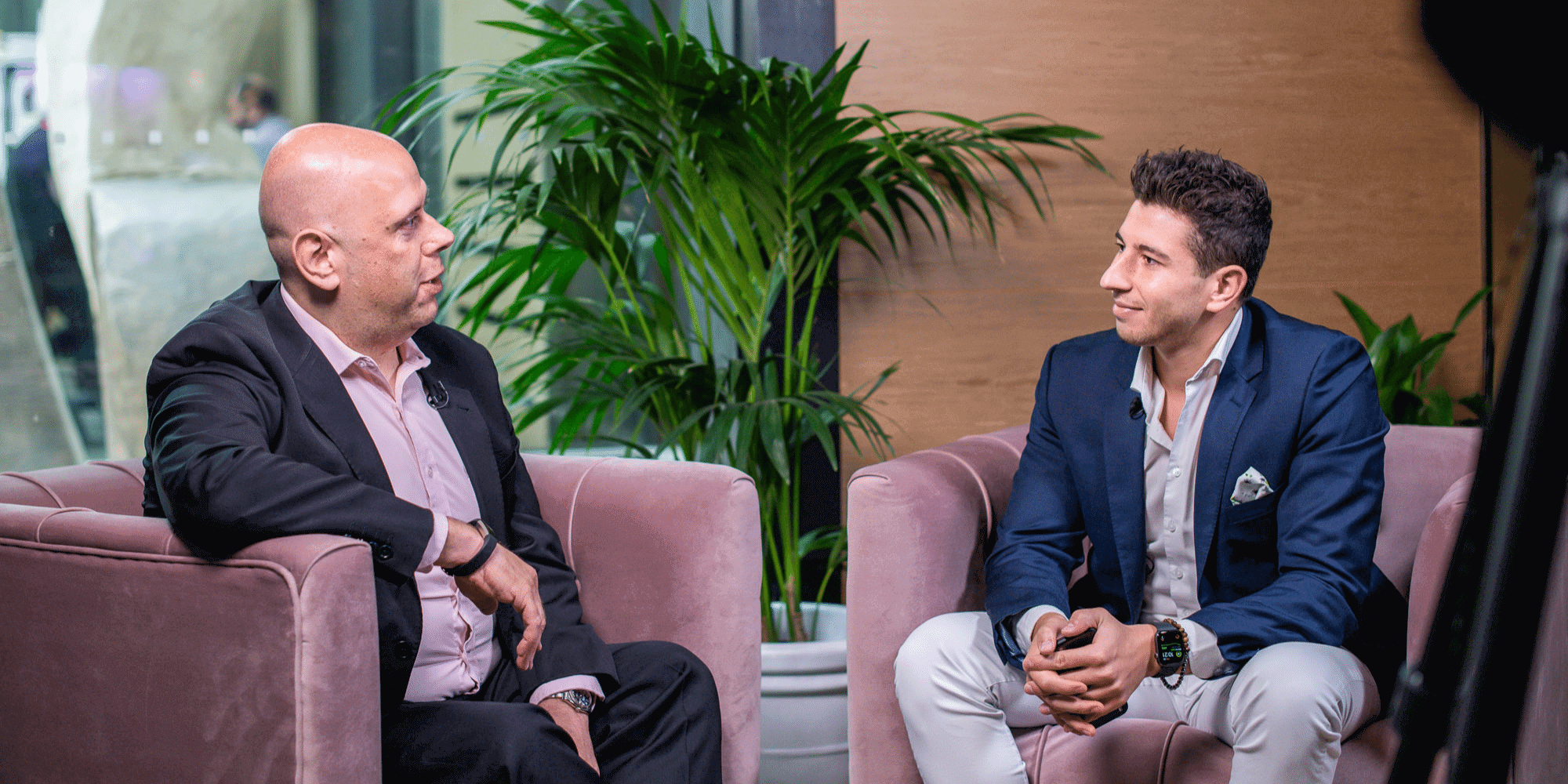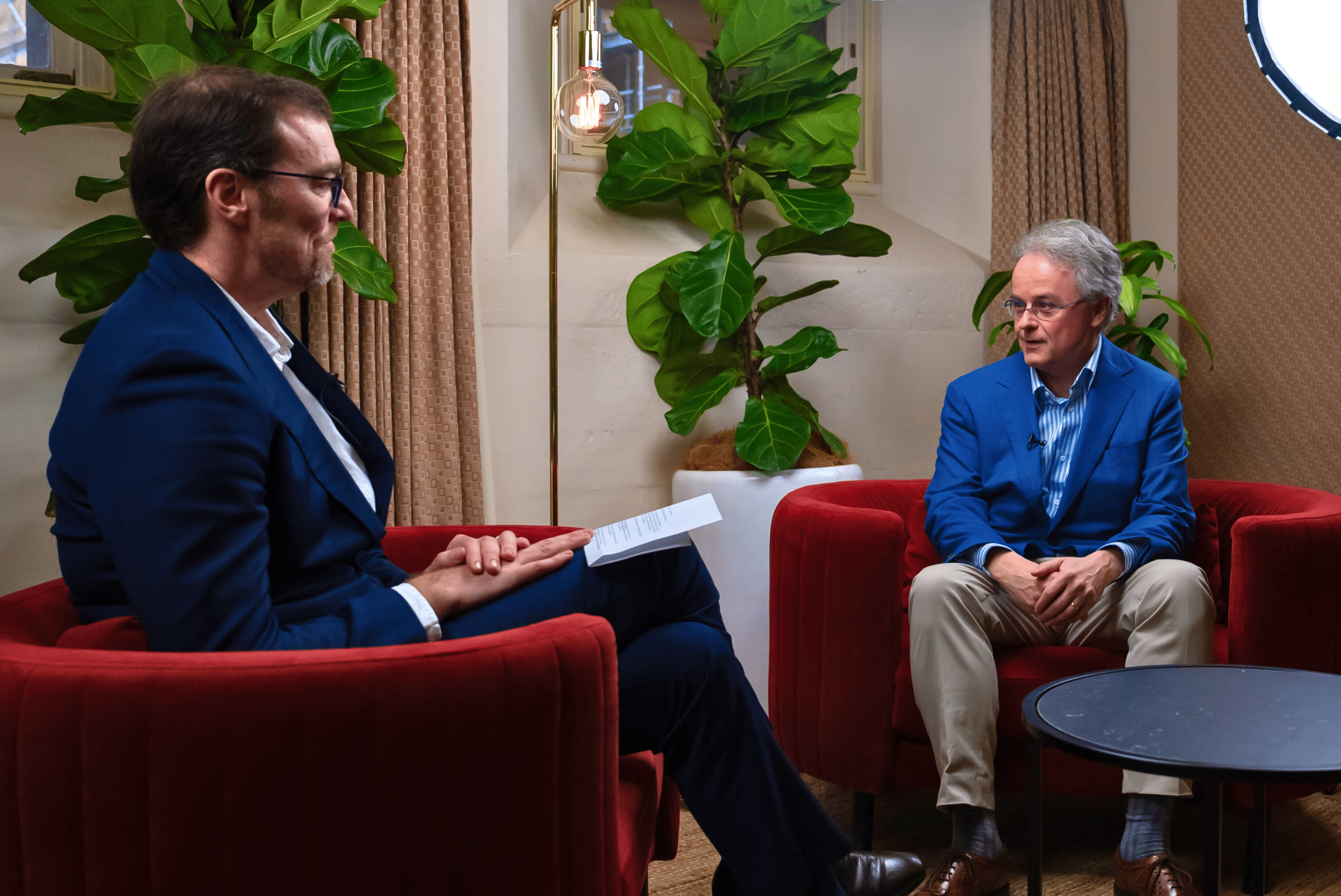Over the past 30 years, Lou has worked with over 40,000 individuals in a wide variety of companies, organisations and industries to improve results, transform cultures and drive outcomes.
As the CEO of Results Group International, he is one of the APAC regions leading authorities in supporting IT and Digital Transformations organisations.
With ADAPT’s Anthony Saba at ADAPT’s CIO Edge, Lou shares how he aligns technology teams and the executive board on digital transformation journeys and how to increase the internal perception of IT in the process.
Anthony Saba:
Thank you for joining us at this year’s Melbourne CIO Edge. We heard you speak to our delegation about leading the team through the IT maturity curve. You explored the three tipping points on that transformation journey.
What I want to ask you, because you work with technology teams, you take them on these kinds of lengthy training and workshops to get them to a certain place.
We hear and we talk about aligning technology, IT, the board, and the CEO, all on this one journey. What exactly does that mean to you in the work that you do?
Lou Markstrom:
All right, great, well first, thanks for having me here. It was great to be at the ADAPT event, a great group of people here, all leaders looking to advance their organisations.
With your question, I want to even look at the way the question was phrased. You said, what this term alignment has to do as we’re advancing IT organisations, and from the organisations, we’ve worked with about 3,000 IT organisations in their transformation journey.
One of the messages we want to give to them is that aligning with the organisation is an outdated term.
One of the things that we want to get away from is thinking IT has to align with the business because when we use the term align, it actually indicates a separation, and we no longer want to think that way.”
We want to now get what IT thinks, from we are the business, so we don’t have to align with them. We are them. We have to think the same way, plan the same way, and we’re all working towards a goal.
The days of IT being separate like we used to be in a back office in a basement, those days are gone and don’t exist anymore.
Anthony Saba:
Absolutely and there’s one thing that effective technology teams do: they market their values and business very well.
That’s hard to do, though, and it’s a long journey to go on to teach your actual employees how to increase that internal perception.
How do you work with clients and organisations and big IT shops to actually do that?
Lou Markstrom:
Well, there are a couple of things with the idea of marketing. When I’m talking to IT leaders, very often, I’ll say, “How many of you woke up this morning and said I can’t wait to market IT’s value today?” and they never say yes.
It is a great idea because many people who got involved with IT said, “We’re doing this. We don’t want to do marketing. Marketing’s not our job.”
It’s even funny. In some organisations, I’m not allowed to call it marketing. We call it communicating our value or a nice, fancy term organisational engagement.
But, when we look at the idea of marketing our value, we find it’s critical for three different reasons for the organisation.
The first one is when we have a new project, a new initiative, are we positioning it, wording it, and marketing in a way where the rest of the organisation will engage.
I’ll joke with organisations and say, “You’re doing a new initiative like the rollout of Office 365. What does the subject line say?” and everyone goes, “Office 365 rollout.”
But, when that email hits, no one pays attention to it because we’re wording our messaging from the IT perspective, not the organisation perspective.
One is to get adaptation and engagement with our new IT products, service, or initiatives, and IT does that okay.
The second one is IT focused on, or marketing focused on building our value. When we’ve done a programme, when we’ve done an initiative, are we doing a good job of letting the organisation know the impact of that initiative?
For lack of a better word, we can call it IT bragging, which we’re not good at.
Then the third one is, as we evolve as an IT organisation and start to really act like a strategic partner or take a leadership role in the business when we have those capabilities, we’ve probably operated as a supplier for a long time.
The rest of the organisation perceives us as a supplier, and marketing becomes critical to change our perception. As we move up, the organisation will engage with us differently.
Anthony Saba:
Excellent, and I love the concept of moving up this maturity curve, right? The end goal is here. Those three critical tipping points that you spoke to, can you take me through them?

Lou Markstrom:
Yes. The first idea of the maturity curve says we as an IT organisation go through four different tiers.
At the first layer, stage one, we’re a supplier. We’re like the order taker of the organisation.
At tier two, we’re a solution provider. The organisation comes to us and says, “We want some input and we want your help”, and luckily at some point, somebody goes, “Hey, we’re working on something. We should get IT’s input.”
We’re a true partner in Stage three: joint planning, joint goal setting between IT and the organisation.
Then at stage four, we become an innovative anticipator where IT starts to take the lead. We understand the technology side, but we understand the business’s goals and objective strategy, and we start to drive a leadership role.”
We need to develop different capabilities along that journey, and we found that there are three critical and different stages.
In the first stage, building a culture that focuses on service excellence is critical. Not just people who are good at service or not that we have a service process, but an overall culture is critical because we can’t move to the next tier without that. It’s our entry ticket.
At the next tier, one of the critical skills is how do we shift the mindset of IT from reactive to consultative, where our team thinks from getting interested in the business outcome. What are we trying to achieve? We’re interested in more than just the technology, and that lets us build that trusted partner relationship with the client.
Then the third one is, what you had just asked about, marketing IT’s value.”
But that consultative piece is critical because if we don’t start to build those trusted partner relationships, how will that marketing stick? So they’re a progression as tipping points.
Anthony Saba:
Absolutely and look, conceptually, all these things are absolute. They’re no brainers. They sound, you hear them, you say, absolutely that’s necessary.
But practically, it’s hard to achieve.
What’s your experience, and how long does it take to move from step one on that maturity curve to that end goal or that destination that you want to take place?
Lou Markstrom:
There’s a lot of variables in that. You have variables in terms of size of the team, where the team is located, and are they in one location or multiple locations?
When I go into an organisation, you can often find the organisation’s in one of three places. The first place will be, they want to move up, and it’s simply a capability issue. Then we have to work on the capability and that type of engagement. It happens quickly.
The second situation would be where you have a capability issue, but there’s some cynicism, some resignation in the organisation. There’s something that you need to overcome before.
Or another way of saying it, one way you have your people, who really care and there’s just a capability issue, that’s the easiest and the quicker one.”
The second one, you have where it’s a capability issue, and people are a little resigned, a little cynical, so you have to move something so that it takes a little longer.
But then the third one that takes the longest is when there’s something toxic in the culture, and we got to get through the toxicity before moving forward. I wish there were… it takes two months, three months, it takes a year, but there are too many variables.
I’ve had organisations that are small making a transition in three or four months. I have organisations where there are thousands of people, and it’s a couple of years journey.
Anthony Saba:
Who leads this change typically? Is it led by the CIO? Is it led by, is that the person that you’re working with, on this or is it across the business?
Lou Markstrom:
So it’ll be both, but usually, the person leading this will be the CIO. But it’s whoever’s strategically responsible for IT is the part that’s using technology to drive value and strategy.
As part of it, there has to be an organisational engagement. But jokingly or, sometimes I’ll have an IT organisation say, “Well we want to do this, but the rest of the organisation doesn’t get it”, or something like that. Well, that means the journey’s just a little bit longer.
But, again, that’s where marketing IT comes in because, if that is the case, we can’t end the conversation, as they don’t get it.
Now we have to look and say, “Well what are we not doing?” to get the marketing. You can also say is the job of educating our clients, educating the organisation.
If the rest of the organisation has viewed IT as a supplier for a long time and you’re trying to engage at a higher level, and they don’t get it, that’s part of the education we have to do.
Of course it would be nice to think one day the rest of the organisation is going to wake up and say, “You know what? I’ve been treating my IT team like a supplier. I really need to treat them like an innovative leader.”
But they’re probably not going to wake up and say that. We have to start to shape and deliver that message to guide that journey.

Anthony Saba:
Sure, and a final thing I’ll ask because many clients are looking at new IT operating models. We’re looking at a product-centric IT operating model.
They do want their team to be more consultative to the business. That is a proactive push that’s happening from the internal out to the business.
What would your one piece of advice be for those leaders who are at the very beginning of that journey? Where do they start? What should they be thinking about now?
Lou Markstrom:
If you want to build a more consultative, the starting point would be getting interested in your clients more than in technical.
Get out there, spend time, know them, know what they’re trying to achieve and their objectives, their strategy. I could ask you a simple question or look at this simple question.
What are the things that you don’t know about your clients? It’s not a trick question, like what do you not know that you don’t know you don’t know. But what is the stuff that you could know that you don’t know?
Do you know their strategic plans? Do you know their goals? Do you know their pain points? Do you know their KPIs? Do you know those types of things, because if you don’t, how can IT ever get out in front?”
If we don’t know those things, we’re always going to be an IT supplier because if we want to use IT and technology to drive strategic outcomes, to drive solutions to pain points, how can we do that if we don’t know what they are?
Spend that time, get to know your clients better. Then you can get to know what they’re trying to do. Then you bring all of your technical knowledge to bear on how you drive the solution.
Anthony Saba:
Absolutely, and then bringing it back to the very start, there’s no better way to align everyone from the top down when you actually understand the business requirements, and you’re working in line with it so.
Lou Markstrom:
Very good. I’m just gonna play with that word. I’m gonna play with that word again. We don’t want to align them.
There’s no better way to create a partnership to be working together to get that IT and the CEO, IT and the CFO, that we’re all in the same business together.





























